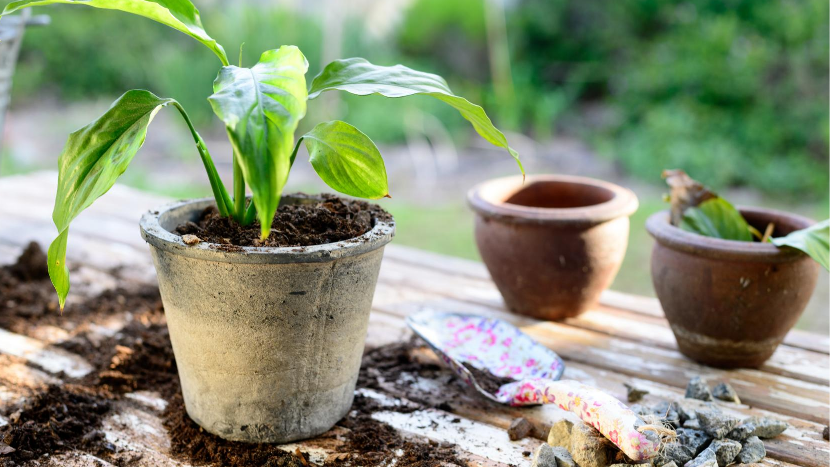How to Repot a Plant
Plant Guide

Receiving a brand new houseplant is almost as if you are welcoming a new family member into your home. Out of sheer excitement, you may be tempted to repot your plant the moment it arrives. However, your plant just went on a journey and is likely to experience some shipment shock. It is best to let it acclimate to the new environment before transferring it to its long-term home.
It can take up to 30 days for a plant to adjust to its new surroundings and it may even shed some leaves in the process. This is perfectly natural. If given proper care, your indoor plants will thrive and grow to surprising new heights. Repotting every year is an integral component to your plant’s health and longevity but watching your plant grow over time can also feel very rewarding to you.
Signs that your plant needs to be repotted
- Roots are pushing the plant upward past the top of your pot
- Plant stops growing (apart from dormancy)
- Soil dries frequently and requires excessive watering
- Salt and mineral builds up on the outside of the planter
- Roots are pushing through the drainage hole or matting near the soil surface
- There are more roots than soil
- Your plant is top heavy and tips over in its planter easily
- The soil is shrinking inside the container
Whenever you determine it is time to repot your houseplant, gather your tools and follow this step by step guide:
Tools:
- Fresh potting soil
- Planter with drainage hole (1 to 2 inches larger than current pot)
- Plant saucer
- Gloves
- Shears
- Watering can
- Rubbing alcohol
- Trowel
Ground Rules

Light
Every plant has different light requirements. For shade-loving plants, place your pot near a north-facing window in the summer. South and west-facing windows receive the most sunlight and are best for plants that require a lot of light. Eastern exposures are best for moderate light lovers as they will receive morning sunlight only.

Water
Generally, you want to water your plants when the soil is dry to the touch. However, every house plant has different needs and you should visit your plant’s product page to customize your watering schedule to your plant’s liking.
Most plants require drainage holes to prevent root rot. If you opt for a decorative planter with no drainage, we recommend adding pebbles to the bottom of the pot and then nestling a smaller terracotta pot on top of the pebbles within the decorative planter.

Soil
Organic Potting Mix works well for most indoor plants. For plants that require less moisture, like succulents, all purpose potting soil works well as the base with a 2:2:1 ratio of soil, sand, and pumice or perlite.

Food
Adding fertilizer will help replenish the nutrients that your soil has lost over time. Plant food such as Jack’s Classic All Purpose Fertilizer can be added to your watering schedule to ensure healthy roots and leaves. After repotting, don’t add fertilizer until your plant starts showing signs of new growth.

Temperature
Luckily, most house plants like the same indoor temperature as you do. 70 to 80 degrees fahrenheit during the day and 65 to 70 degrees fahrenheit at night is ideal.
Planting Process
- Gather all your tools and clean your shears with rubbing alcohol to keep your plant disease-free and healthy.
- Turn your plant sideways and carefully slide it out of its pot while keeping the root ball intact. A gentle tap can do the trick if your plant is stubbornly clinging to its old pot.
- Loosen the soil around the roots and trim any roots that are discolored, rotten, or too long.
- Place a coffee filter, large stone, pebbles, or lava rock on the bottom of your planter so that the soil or roots don’t clog the drainage hole. Then put a layer of fresh soil on the bottom of your pot.
- Put your plant in the center of your pot, filling the pot with fresh soil. Leave 1 inch of space from the top of the soil to the top of the pot so it does not overflow when watering. Over time, your plant will overgrow its pot and the roots will push the plant upward. You can tell if a plant needs to be repotted if the 1” of space at the top has gotten smaller over time.
- Water your plant thoroughly in a sink or outside so it can get a good soaking but also drain adequately.
Please use and share this helpful infographic:

